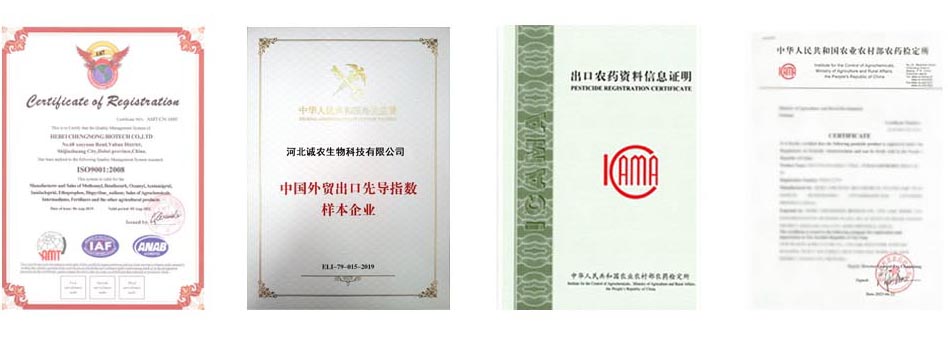
Th12 . 19, 2024 14:42 Back to list
thiamethoxam
Thiamethoxam An Overview of Its Uses and Impacts
Thiamethoxam is a systemic insecticide belonging to the neonicotinoid class, a category of chemicals that have been widely used in agriculture to control a variety of pests. Since its introduction in the early 2000s, thiamethoxam has gained prominence for its effectiveness in managing insects that threaten crops, particularly in the context of intensive agriculture. This article will explore thiamethoxam’s chemical properties, its applications in agricultural practices, its environmental impacts, and ongoing discussions surrounding its safety.
Chemical Properties and Mechanism of Action
Thiamethoxam operates by targeting the nicotinic acetylcholine receptors in the nervous systems of insects. This action disrupts normal nerve transmission, leading to paralysis and eventual death of the pest. One of the key advantages of thiamethoxam is its systemic nature; it can be absorbed by plant tissues, offering protective qualities that are more enduring than contact insecticides. This systemic action is particularly useful for crops that are susceptible to piercing-sucking insects, such as aphids and whiteflies, which can damage plants and transmit diseases.
Agricultural Applications
Thiamethoxam is primarily used on a vast array of crops, including corn, soybeans, cotton, and various fruits and vegetables. Farmers appreciate its high efficacy against pests, resulting in significant yield increases and improved crop quality. Moreover, thiamethoxam is often utilized in integrated pest management (IPM) programs, which aim to minimize the reliance on chemical pesticides while maintaining agricultural productivity. Its ability to control pests effectively means that growers can reduce crop losses and economic burden in their operations.
Additionally, beyond agricultural crop protection, thiamethoxam is also employed in non-agricultural settings, including landscape management and pest control in structural environments
. This broad applicability demonstrates its versatility as an insect management solution.Environmental Impact and Concerns
thiamethoxam

Despite its effectiveness, thiamethoxam and other neonicotinoids have been subjects of significant environmental concern. Studies have indicated potential adverse effects on non-target organisms, including beneficial insects like bees and other pollinators. The systemic nature of thiamethoxam means that it can persist in the environment, leading to unintentional exposure of non-target species, raising alarms about its contribution to the decline of pollinator populations.
Regulatory bodies in various countries are increasingly scrutinizing thiamethoxam’s usage. For instance, the European Union has imposed restrictions on the use of certain neonicotinoids to protect pollinator species, leading to debates within the agricultural community regarding sustainability versus productivity. The challenge remains to find a balance between effective pest control and environmental stewardship.
Ongoing Research and Alternatives
As the awareness of environmental impacts associated with thiamethoxam grows, ongoing research aims to better understand its long-term effects on ecosystems. This research not only evaluates the implications for biodiversity but also examines potential alternatives to thiamethoxam. Integrated pest management techniques may involve rotating different types of insecticides, incorporating biological control methods, and promoting sustainable farming practices that enhance soil health and ecosystem resilience.
Furthermore, the development of new pest management technologies, including genetically modified organisms (GMOs) and precision agriculture practices, offers promising avenues to reduce dependence on chemical insecticides like thiamethoxam.
Conclusion
Thiamethoxam remains a powerful tool in modern agriculture, providing effective pest control solutions that support crop production. However, its environmental implications, particularly concerning pollinators and non-target organisms, necessitate careful consideration and management. As agriculture faces ongoing challenges from pests and environmental degradation, the task ahead will be to leverage thiamethoxam's benefits while minimizing its risks through sustainable practices and innovative research. Balancing productivity and environmental health is crucial for the future of global food security and ecosystem integrity.
-
Azoxystrobin: Broad-Spectrum Fungicide Solutions
NewsAug.11,2025
-
Best EPA Boscalid: Superior Crop Fungicide for Max Yields
NewsAug.11,2025
-
Best Willowood Imidacloprid: Superior Pest Control Solutions
NewsAug.10,2025
-
Best EPA Boscalid Fungicide: Ultimate Crop Protection
NewsAug.09,2025
-
Cyprodinil Fungicide: Broad-Spectrum Crop Protection
NewsAug.08,2025
-
Tembotrione Herbicide: Advanced 8% OD for Broad Spectrum
NewsAug.07,2025
